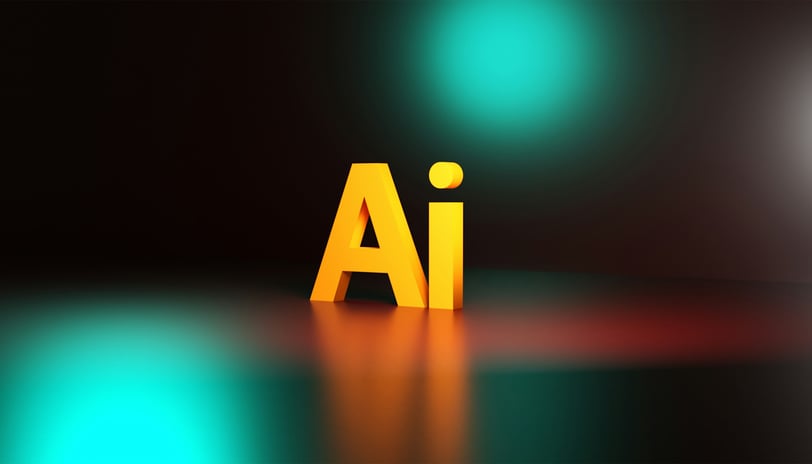How to Build and Monetize an AI Business Assistant in 2025
Create and monetize an AI business assistant using automation, AI APIs, and digital strategies. Scale your AI-powered solution for success in 2025 and beyond.
AI AUTOMATION & MONETIZATION
Svet.
5/12/20253 min read


How to Build an AI Business Assistant and Monetize It in 2025
Introduction
Artificial Intelligence (AI) is reshaping the way businesses operate. In 2025, companies are actively seeking AI-driven solutions to optimize workflows, reduce costs, and increase revenue.
An AI business assistant is a powerful digital tool that automates customer interactions, content creation, marketing strategies, and business processes—all without human intervention. If you're looking to build a profitable AI product, this guide will walk you through the development process, monetization strategies, and how to scale your AI business assistant for success.
Why AI Business Assistants Are the Future
Businesses worldwide are adopting AI-driven tools to improve efficiency, customer engagement, and marketing strategies. AI assistants help companies:
Automate customer service through chatbots.
Generate marketing content, including ad copy, email templates, and blog posts.
Optimize sales funnels and analyze consumer behavior.
Improve productivity by automating repetitive tasks.
This rising demand for AI-powered automation makes AI business assistants highly profitable, especially as companies embrace digital transformation and artificial intelligence integration.
How to Build an AI Business Assistant
To launch a successful AI assistant, you first need to choose the right technology. There are three main approaches:
1️⃣ No-Code Platforms (Fast & Easy Development)
If you're not a developer but want to build an AI assistant, No-Code platforms allow you to create AI-powered tools without writing code.
✅ Bubble – Drag-and-drop web app builder. ✅ Chatfuel – AI chatbot automation for Facebook and Messenger. ✅ Tilda – Website builder with AI integrations for landing pages.
👉 Best for entrepreneurs who want a simple solution without programming skills.
2️⃣ Open-Source AI Solutions (Advanced Customization)
Open-source platforms offer full control and customization, ideal for those with technical expertise or a development team.
✅ Rasa – AI chatbot framework with natural language processing (NLP). ✅ Hugging Face – Pre-trained AI models for text generation and analysis. ✅ FastAPI – Powerful framework for AI-based API services.
👉 Best for businesses that require personalized AI automation and flexibility.
3️⃣ AI API Integration (Ready-to-Use AI Features)
AI API services provide pre-built AI capabilities, allowing businesses to integrate AI into their applications without building models from scratch.
✅ OpenAI API – AI-generated content, chatbots, and automation. ✅ Google Vertex AI – AI-powered business analytics and machine learning. ✅ Microsoft Copilot Studio – AI solutions for customer engagement and workflow automation.
👉 Best for companies that want AI capabilities without developing their own infrastructure.
Steps to Develop Your AI Business Assistant
1️⃣ Define the Core Functions
Before development begins, decide what your AI assistant will do. Will it generate content, automate customer interactions, or analyze data?
2️⃣ Choose a Development Platform
Select No-Code, Open-Source, or AI APIs, depending on your technical expertise and business model.
3️⃣ Build an MVP (Minimum Viable Product)
Create a basic version of the AI assistant with essential features. Gather feedback from early users and refine accordingly.
4️⃣ Integrate AI Automation
Enhance the assistant with natural language processing, machine learning, and API integrations.
5️⃣ Optimize for User Experience
Ensure an intuitive interface that makes AI easy to use for businesses.
Monetization Strategies: How to Earn Revenue from Your AI Assistant
💰 Subscription Model – Charge users a monthly or yearly fee. 💰 One-Time Purchase – Sell AI software licenses for a flat fee. 💰 Freemium Model – Offer basic features for free, with premium upgrades. 💰 Enterprise Licensing – Businesses pay for commercial licenses.
📢 Marketing Strategies: 🎯 SEO-driven landing pages to attract organic traffic. 📢 Paid ads (Google Ads, LinkedIn, and Facebook) for visibility. 🤝 Affiliate and partnership programs to drive sales.
Licensing Your AI Business Assistant
Licensing ensures that your AI product remains protected while generating revenue. Consider the following models:
✅ Proprietary License – AI assistant is closed-source; clients pay for usage rights. ✅ SaaS License – Subscription-based access model. ✅ Enterprise License – Large businesses pay a premium for unlimited access. ✅ Open-Source License – Allows developers to modify and contribute while maintaining a commercial strategy.
Choosing the right licensing structure will impact profitability, customer engagement, and scalability.
Scaling and Growing Your AI Business
Once your AI assistant is live, growth strategies will determine its long-term success.
🚀 Enhance AI Capabilities – Regular updates improve accuracy and efficiency. 🚀 Expand Integrations – Link AI to CRM, e-commerce, and marketing tools. 🚀 Global Expansion – Offer AI services in multiple languages. 🚀 Affiliate Marketing – Work with partners to promote and sell your AI assistant.
Conclusion
AI business assistants are transforming digital automation and business workflows. With the right development strategy, monetization model, and marketing tactics, you can build a profitable AI-driven business in 2025.
Now is the perfect time to enter the AI automation space! 🚀 Ready to take the next step?
Explore
Discover lifestyle tips and trending products daily.
Connect
Inspire
© 2024. All rights reserved.
